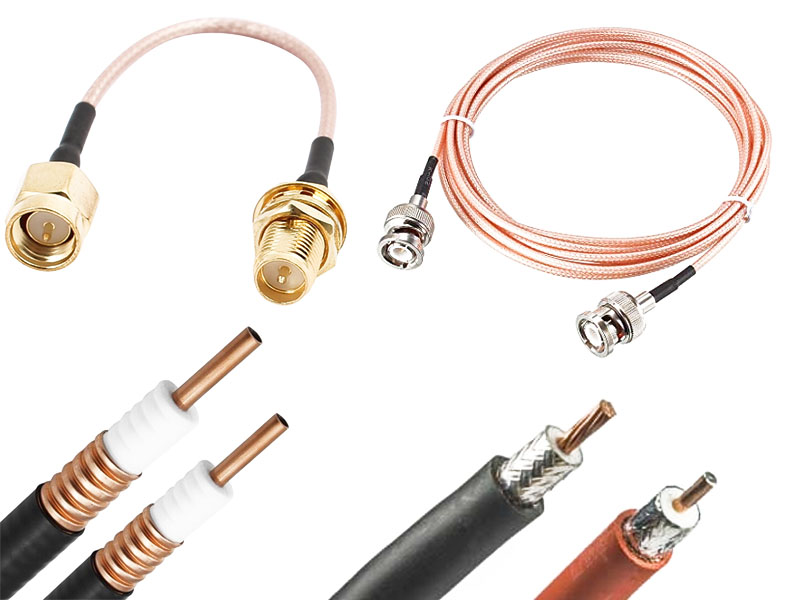-
We’re On Call 24/7 : +8613538296050
-
E-mail : anna@rohoconnector.com
We’re On Call 24/7 : +8613538296050
E-mail : anna@rohoconnector.com
In the process of transmitting data signals, the Coaxial cable will continuously wear out the signal, which will cause the amplitude of the signal to decrease after reaching the end point, and sometimes it will not meet the normal working requirements. The factors affecting signal loss mainly include cable resistance loss, dielectric loss, and mismatch loss. At the same time, leakage loss is also a problem that cannot be ignored when low-quality cables operate at high frequencies.
Resistance loss
The resistance loss is the consumption of the signal energy by the eddy current caused by the DC resistance of the cable and the high frequency induction of the conductor. The value of the resistance is related to the raw materials and production process used in the cable. At the same time, it will change with the change of transmission frequency. The reason is that the conductor has a skin effect in transmitting AC signals. As the frequency increases, the effective resistance will continue to increase.
When an alternating current passes through the conductor, an alternating magnetic field is generated around the conductor. This magnetic field in turn causes a new induced current (eddy current) inside the conductor, It is opposite to the signal current in the center of the conductor. The direction of the signal current is the same as the surface of the conductor. In this way, the signal current inside the conductor is cancelled by the reverse eddy current, and the current is reduced; the signal current on the conductor surface is the same as the eddy current, and the current is increased. This is the skin phenomenon of alternating current through conductors.

With the increase of the signal frequency and the increase of the induced current, the situation becomes more and more significant. It concentrates the current only on a small cross-section of the surface layer, resulting in a significant increase in the effective resistance of the conductor.
The skin depth of the signal is related to frequency and material. The lower the frequency, the deeper the skin depth; the higher the frequency, the shallower the skin depth. Iron has a much smaller skin depth than copper.
2. Dielectric loss
The dielectric loss is the loss of signal by the dielectric (insulator) between the center conductor and the outer conductor of the coaxial cable. An important parameter for measuring dielectric is the dielectric constant. It refers to the ratio of the capacitance when a substance is used as a dielectric in the same capacitor to the capacitance when it is a vacuum, which is called the "dielectric constant" of the substance. The dielectric constant generally varies with temperature and the frequency of electromagnetic waves propagating in the medium.
The inner and outer conductors of the RF coaxial cable are equal to the two poles of the capacitor. Since the cable dielectric in practice has resistance, the dielectric constant usually exceeds 1. Thus, the loss of signal during transmission is inevitable. The dielectric constant is related to the material and processing process (eg, foaming). The larger the dielectric constant, the greater the loss to the signal. The higher the temperature, the higher the frequency and the greater the dielectric loss.
3. Mismatch loss
The mismatch loss is mainly related to the physical structure of the coaxial assembly cable. If the coaxial cable is designed and manufactured to cause the cable to detach from the nominal impedance or the cable impedance is not uniform, it will result in signal mismatch loss. Over-bending, deformation, damage, and joint ingress of the cable during construction can also cause mismatch losses.
The characteristic impedance of a coaxial cable (not a DC resistance) is independent of the cable length, which is determined by the equivalent capacitance and inductance in the cable. This equivalent capacitance and inductance are determined by the diameter of the inner and outer conductors and the dielectric constant of the medium.
Uneven cable impedance or mismatch with the signal source and load will cause the cable to return to the opposite direction of the transmission direction when the signal is transmitted, that is, reflection. It will affect the original signal. This leads to a reduction in transmission efficiency. In severe cases, it directly harms the normal operation of the system.
The degree to which a signal is reflected in transmission can usually be expressed in terms of standing wave ratio or reflection loss (return loss).
4. Leakage loss
Leakage loss is the signal that the signal radiates according to the braided gap of the cable shield. It also causes energy loss of the signal during transmission. It is a problem that cannot be ignored in high frequency transmission. Therefore, the braid coverage of the cable should not be too low.
In summary, the coaxial cable has various elements for signal transmission loss. Its final loss is based on the total number of losses described above, which can be tested with a network analyzer. The DC resistance of the cable plays a major role in signal attenuation only at low frequencies; at high frequencies, the attenuation of the signal is primarily determined by the skin effect and dielectric loss. The coaxial cable then increases the signal frequency and the signal attenuation multiplies. Therefore, the transmission loss of the cable is important in consideration of high frequency loss. In addition to the design, production and processing of the cable, the improper construction in use will also have a significant impact on the normal use of the cable.